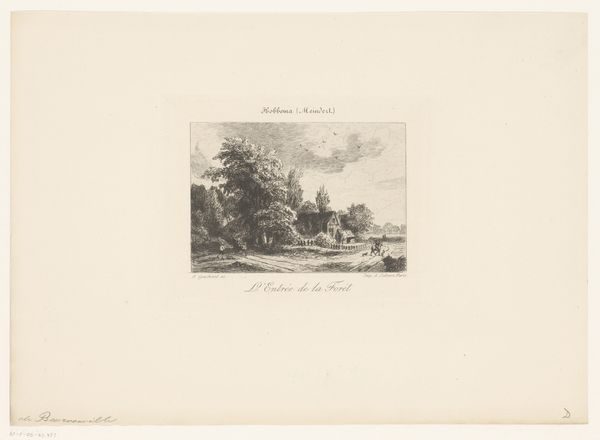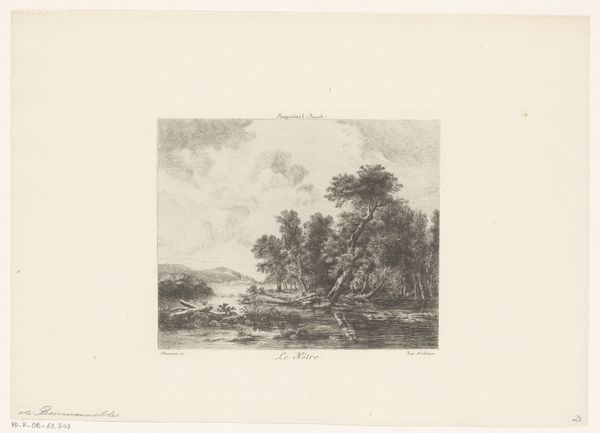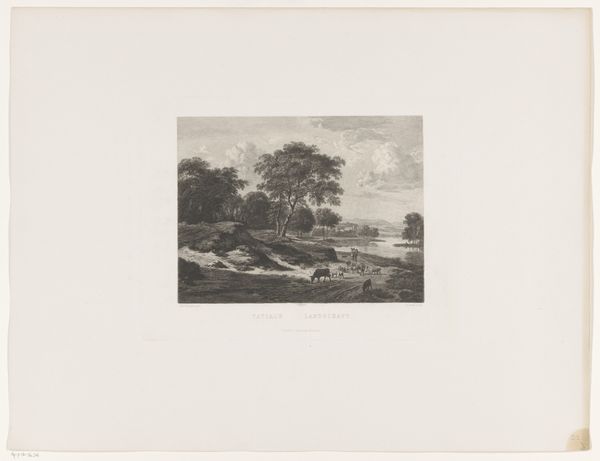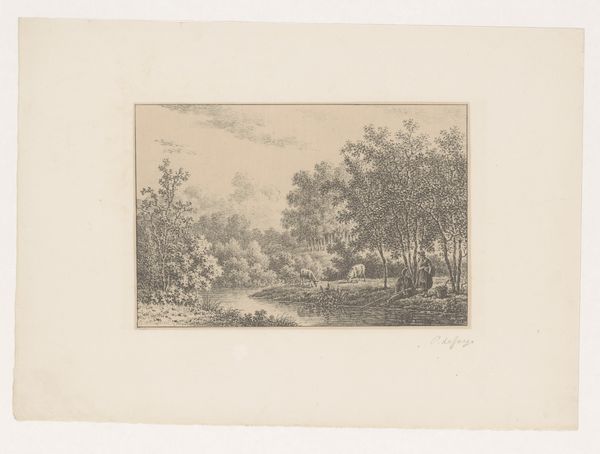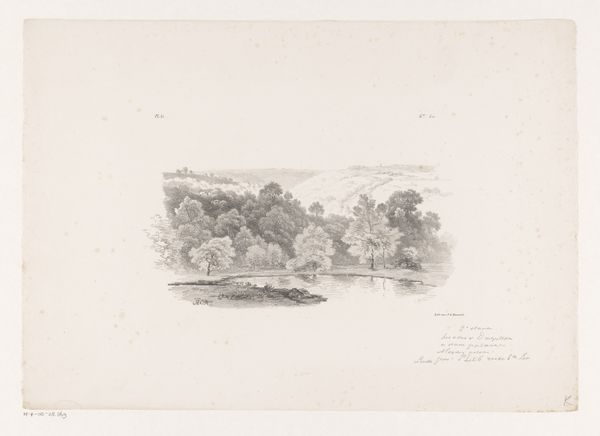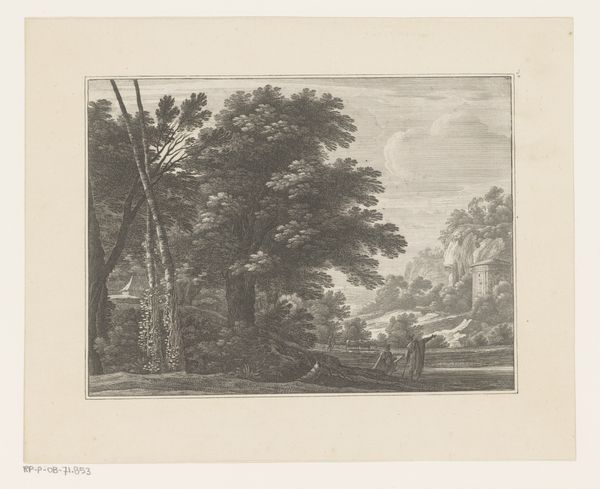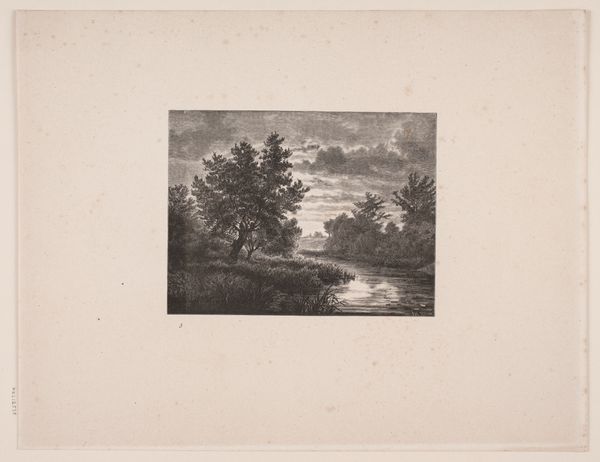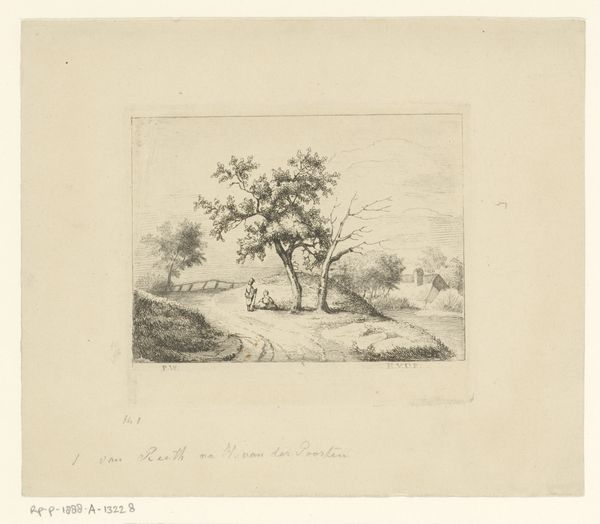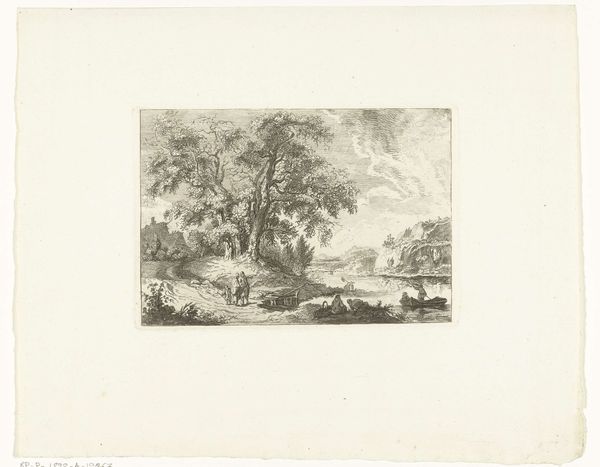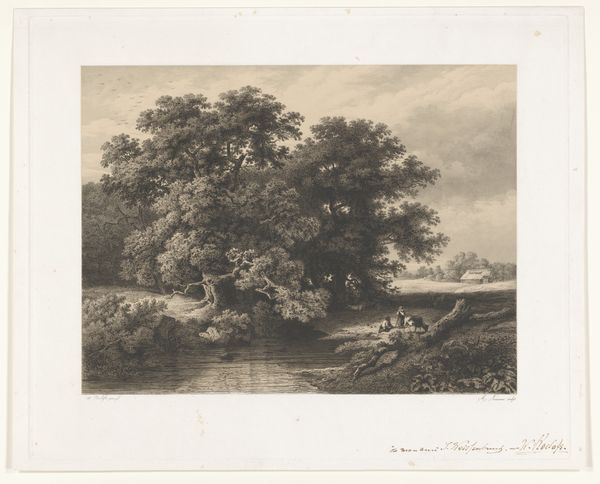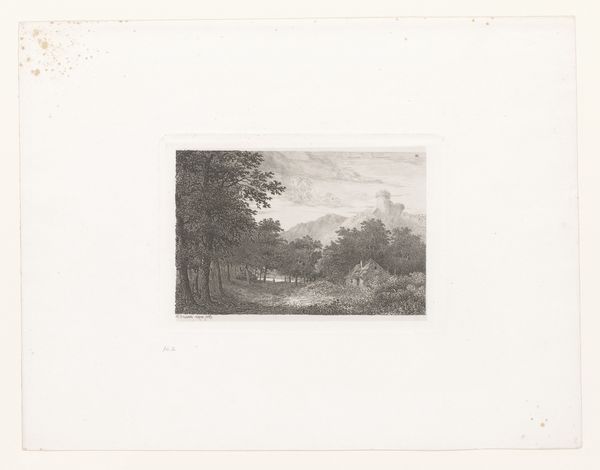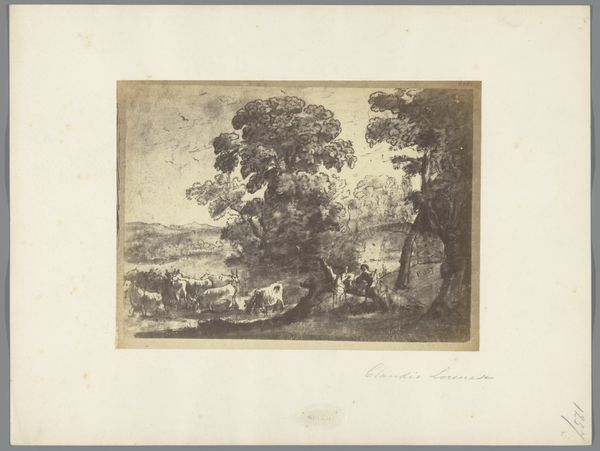
print, etching
# print
#
etching
#
landscape
#
river
#
genre-painting
#
realism
Dimensions: height 133 mm, width 177 mm
Copyright: Rijks Museum: Open Domain
Curator: This etching, "Rivierlandschap met bomen en waterrad," translating to "River Landscape with Trees and Water Wheel," likely dates from the late 19th century, around 1859 to 1911, and comes from the hand of Henri Toussaint. Editor: The texture alone has captured my interest—such a subdued tonal range, predominantly cool grays. It feels immediately melancholic, peaceful yet somehow distant. Curator: Toussaint, despite not achieving widespread fame, participated in a vibrant period for etching in Europe. The industrial revolution drove interest in rural imagery as a contrast to urban change, tapping into an idealized past, and we must account for a growing bourgeoisie in need of such art. Editor: Absolutely, and he clearly manipulates his etched lines to generate various values and shadows—it looks as if it were a complete tonal palette, considering his commitment to black and white. The reflections in the water add to its atmospheric depth, which gives form to an image built only on two-dimensional grounds. Curator: His style is classified as realism, but perhaps a romantic realism. Etchings allowed wider distribution of images of genre painting and landscape. Look at the meticulous depiction of everyday rural scenes—note the detail in the architecture of the water wheel and the trees and how the landscape might communicate ideas of stability to a modernizing population. Editor: Note as well that despite being rather muted and composed in fairly traditional representational terms, his composition manages to generate tension and depth and that comes through even today, over a hundred years since the artwork's conception! Curator: These prints offered consumers an avenue for reflection about modern times—a way of engaging, at home, in political questions. Toussaint provided an imagined return to what life should be like through the popular aesthetics of print culture. Editor: It's an intriguing reminder of the emotional power art can hold through seemingly simple lines and a restricted range of contrasts. I think it stands as evidence to how form enables function, particularly given Toussaint’s mastery here.
Comments
No comments
Be the first to comment and join the conversation on the ultimate creative platform.
